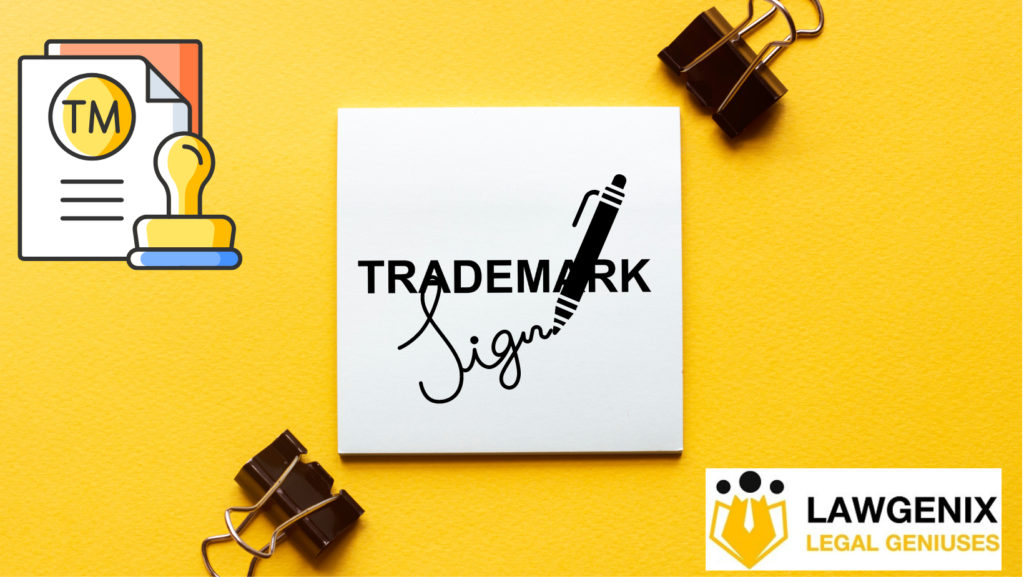INTRODUCTION
Trademarks are an integral part of business branding, serving as valuable assets that distinguish products and services in the marketplace. While traditional trademarks typically consist of logos, names, or slogans, a fascinating trend has emerged in recent years – the use of signatures as trademarks. A signature, with its unique and personal nature, can carry immense recognition and association with an individual, making it a powerful branding tool.
WHAT IS A SIGNATURE TRADEMARK?
A signature trademark refers to the use of an individual’s signature as a distinctive identifier and symbol of their personal brand or business. It involves registering the signature with the relevant trademark authorities to obtain legal protection and exclusive rights to use the signature in connection with specific goods or services.
Obtaining a signature trademark involves a formal process that includes filing a trademark application, specifying the class of goods or services associated with the signature, and undergoing examination and potential opposition proceedings. Once registered, the signature trademark grants the owner exclusive rights to use the signature in connection with the specified goods or services, and it provides legal protection against infringement or unauthorized use by others.
Signature trademarks are particularly relevant for individuals in various fields, including celebrities, artists, business leaders, and public figures, as their personal brand and identity hold significant value. By trademarking their signature, these individuals can enhance their brand recognition, maintain exclusivity, and exercise control over the commercial use of their personal signature.
What do you understand by the classification of Trademark?
The Nice Classification is an international system used to classify goods and services for the purpose of trademark registration. It was established by the Nice Agreement, which is an international treaty administered by the World Intellectual Property Organization (WIPO). The Nice Classification provides a standardized framework for categorizing goods and services in trademark applications, ensuring consistency and clarity in the registration process across different jurisdictions.
The classification system is hierarchical, with broader categories at the higher levels and more specific subcategories at the lower levels. Each class is further divided into subclasses, allowing for more precise classification within a particular category. For example, Class 25 includes clothing, footwear, and headgear, while subclasses within Class 25 specify particular types of clothing or footwear, such as T-shirts, shoes, or hats.
When filing a trademark application, the applicant must indicate the specific class or classes under which their goods or services fall. This ensures that the trademark is registered and protected in the appropriate category. It also helps in avoiding confusion with similar trademarks in the same or related classes.
When registering a signature as a trademark, it is important to specify the classes of goods or services for which the trademark will be used. Trademark classes categorize different types of goods and services to ensure clarity and accuracy in the registration process. The classification system used varies depending on the country, but one commonly used system is the Nice Classification.
Under the Nice Classification, there are 45 classes, with classes 1 to 34 covering goods and classes 35 to 45 covering services. Here are some examples of classes under which a signature trademark may be registered:
- Class 9: Scientific, nautical, surveying, photographic, cinematographic, and optical apparatus and instruments; apparatus for recording, transmission, or reproduction of sound or images; magnetic data carriers, recording discs; compact discs, DVDs, and other digital recording media; downloadable electronic publications.
- Class 16: Paper, cardboard, and goods made from these materials; printed matter; photographs; stationery; instructional and teaching materials; calendars; books; magazines; newspapers; artists’ materials; office requisites; writing instruments.
- Class 25: Clothing, footwear, and headgear; clothing accessories; belts, gloves, scarves; T-shirts; shirts; trousers; skirts; dresses; hats; caps; footwear; shoes; boots; sandals.
- Class 35: Advertising; business management; business administration; office functions; retail services; online retail services; promoting the goods and services of others; marketing research; provision of business information; commercial intermediation.
- Class 41: Education; providing of training; entertainment; sporting and cultural activities; organizing and conducting conferences, exhibitions, and seminars; publication of books and texts; production of radio and television programs; film production; artist management services.
- Class 42: Scientific and technological services; industrial analysis and research services; design and development of computer hardware and software; graphic design services; computer programming; providing online non-downloadable software; website design and development; intellectual property services.
CONCLUSION
In conclusion, the use of a signature as a trademark offers individuals a unique and powerful tool for protecting their personal brand and establishing a distinct identity in the marketplace. By registering a signature as a trademark, individuals can gain legal protection, exclusivity, and control over the commercial use of their signature. Through the process of trademark registration, individuals can safeguard their signature from unauthorized use or infringement, ensuring that it remains exclusive to their personal brand. This legal protection grants them the right to control and enforce the commercial use of their signature, preventing others from exploiting or imitating it for their own benefit.
Furthermore, a signature trademark opens up a world of commercial opportunities. It allows individuals to license their signature for various products, endorsements, collaborations, and merchandise, creating new revenue streams and expanding their brand presence. In the dynamic and competitive business landscape, a signature trademark serves as a powerful asset, embodying an individual’s identity, creativity, and professionalism. It is a testament to their unique persona and a valuable tool for making a lasting impact in the minds of consumers.
Rossel Aggarwal
Associate Intern at Lawgenix-Legal Geniuses, Mohali

